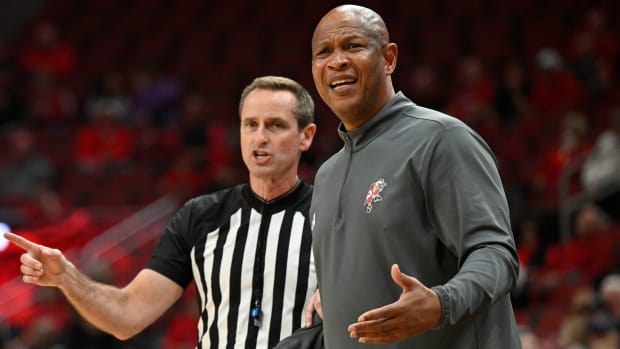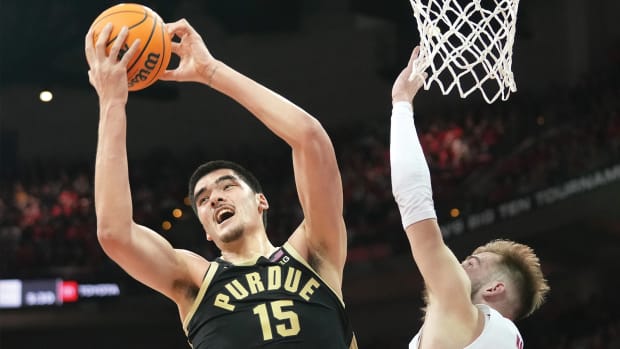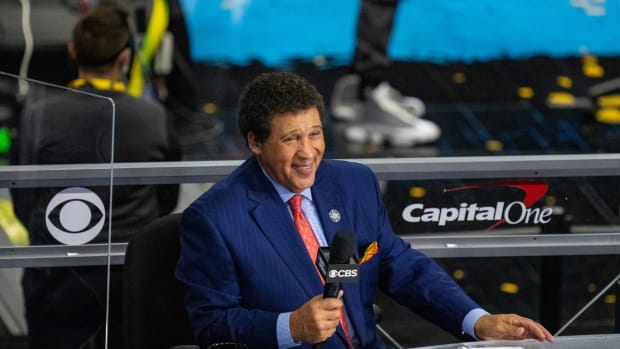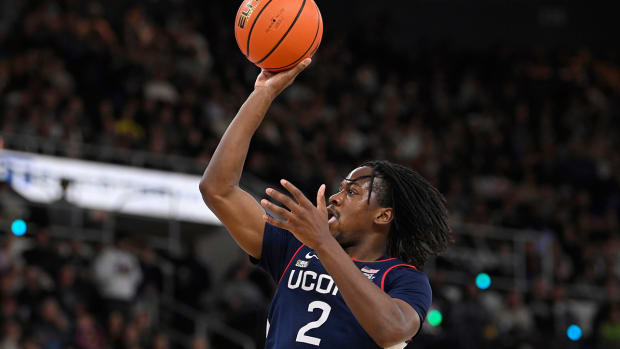At the Heart of It: Cardiac Inflammation the Next Virus Hurdle for College Leaders
Dr. Matthew Martinez has studied so many images of a beating heart that he couldn’t possibly count them. Maybe 500,000. Maybe 1 million. As a non-invasive cardiologist, his job revolves around the constant evaluation of pictures of the heart.
He knows what a strong, healthy heart looks like. He knows what a poor, struggling heart looks like. And he knows what a heart looks like after COVID-19’s tentacles have reached the most vital organ in the human body. “This virus,” he says, “seems to have an affinity for causing damage to the heart.”
In a small percentage of infected patients, COVID-19 leaves behind troubling scars in the throbbing muscle within their chests, known as myocarditis. The virus directly invades the heart muscle, weakening and damaging its cells, through blood clots and inflammatory responses to viral infection. Earlier during the pandemic, doctors only associated the condition with severe and, oftentimes, hospitalized COVID victims, usually elderly patients or those with underlying health problems.
Lately, physicians are identifying the condition in young, healthy Americans — including athletes. “The last month or two, even asymptomatic young people are developing myocardial injury,” Martinez says.
Of all the hurdles impeding a 2020 college football season, there is one roadblock that has gone mostly overshadowed, buried beneath the other more prominent obstacles, such as testing, travel, a bubble-less college campus and quarantine requirements. That hurdle? The heart.
“That’s what has been the final straw,” says a team doctor at a prominent college football program. “The commissioners are finally figuring it all out. The commissioners are going, ‘Oh my gosh!’ And the doctors are like, ‘Yeah...’”
University leaders and conference executives are grappling with new information from the medical world about the virus’ after effects on its victims, exacerbating an already difficult conundrum: risk it and play a fall season, or sit out and watch an industry potentially crumble? Revelations from physicians like Martinez have deepened the debate.
In fact, the brewing heart issue is a topic on recent calls among the Power 5 conference medical task force, including commissioners and team doctors. Fear over myocarditis has reached the top level of the sport, with Big 12 commissioner Bob Bowlsby and Big Ten commissioner Kevin Warren having both privately expressed serious concern over the condition. One Power 5 team doctor, who is privy to conference commissioner calls, says the heart condition is a primary topic during discussions. “We discuss it on every call,” the doctor says under the condition of anonymity.
The issue reared its head Saturday in what was, to this point, the most significant college football news of the shutdown: The Mid-American Conference became the first FBS league to cancel its fall season. The MAC’s medical advisory board unanimously advised conference leaders to suspend the season. And while financial implications were a factor too (MAC schools, on a normal year, lose money on football), the long term and somewhat unknown health impacts of COVID-19 victims — including myocarditis — was an essential discussion point.
“That’s what people aren’t getting,” says a high-ranking MAC administrator with knowledge of the presidents’ call Saturday. “It’s pulmonary, cardiac issues.”
Physicians themselves are still learning about a novel virus and its post-recovery impacts on the human body. Myocarditis is one of many after effects, but for athletes, it is the most serious, says Martinez, the medical director of sports cardiology at Atlantic Health System in New Jersey. Martinez knows a thing or two about athletes’ hearts. He’s the league cardiologist for Major League Soccer, is the cardiac-specific consultant for the NBA and on the medical committee for the NFL.
He acknowledges that the cases in athletes with COVID-related heart impacts are very small. Among professional, college and youth league athletes, he’s seen no more than a dozen in the US. However, there are likely many more. Some go undetected or have not been brought to his attention. Doctors aren’t exactly sure how common the condition is. Some have publicly stated that recovered COVID-19 patients have shown as much as a 50% impact on their heart, but with striking degrees in severity.
A recent German study released in July revealed heart inflammation in 60 of 100 recovered virus patients. That number included patients who were asymptomatic or mildly symptomatic.
A college team doctor told Sports Illustrated on Saturday that he’s aware of roughly 10 COVID-related heart impacts in all of college football, many or all of them from mildly symptomatic players. While the number is a fraction of the total population, the potential consequences of heart injury are grievous. Myocarditis symptoms include chest pain, abnormal heartbeat, shortness of breath and, in the most serious case, sudden death. Already, myocarditis represents roughly 2-5% of all sudden death cases in American sports.
While many COVID-related myocarditis cases in athletes remain private, some have emerged publicly. Left-handed pitcher Eduardo Rodriguez, projected as the Red Sox No. 1 pitcher this year, developed myocarditis after contracting COVID-19. He will miss the 2020 season. The mother of an Indiana offensive lineman suggested in a Facebook post earlier this week that her son may have heart complications as an after effect of the virus.
At least one college football player has developed an enlarged heart after contracting COVID-19, a team trainer told SI under the condition of anonymity. The recovery time for such heart damage is a minimum of three months of no activity, says Martinez.
Martinez says he has heard from virtually every major college football conference this summer regarding the heart issue. Some of them are forging ahead, he says, with a plan to “pivot” if things go awry. “Others have said, ‘I think we oughta stop,’” says Martinez. “The MAC did that today.”
His advice to conference officials has been to make cardiac screenings mandatory for those who have contracted the virus. It’s why the most recent conference medical plans include cardiac screenings under the return-to-play protocol.
Martinez is recommending a three-level screening for all COVID-19 positives to return to activity: an EKG, an echocardiogram and a troponin blood test, which measures the level of cardiac-specific troponin in the blood to help detect heart injury. Each blood test and EKG can roughly cost about $50, Martinez says. The more intrusive echocardiogram can run as high as $500 per test. “It can be done. You can play football,” he says, “but resources must be utilized.”
The disparity in college athletics is great. In FBS alone, there is a large monetary gap between the Power 5 conference programs and the Group of 5 teams. The gap grows wider from the Group of 5 to FCS and from Division II to Division III. Few if any FCS, D2 and D3 programs are expected to play football this fall. Many of them don’t have the funding to meet NCAA requirements for in-season testing, quarantining and contact tracing.
Saturday was a bleak day also for the top division in the NCAA. After the MAC canceled its season, the Big Ten paused its preseason practice. And on Friday, there was this from the NCAA’s chief medical expert, Brian Hainline: “Almost everything would have to be perfectly aligned to continue moving forward.”
Add another obstacle to the list: the heart.




